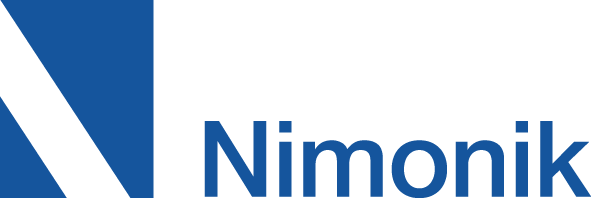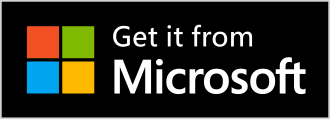By: Cheryl Wong
Here are a few noteworthy global EHS regulatory changes in August 2025. We cover EHS legislation and standards for over 30 countries and 400 jurisdictions. If you would like to track legislative changes for specific regions, countries, or jurisdictions, we are happy to help. Please send us a request for more information here, and we will contact you shortly. Note that descriptions with an asterisk (*) were generated with artificial intelligence.
- Canada – Federal
- Canada – Nova Scotia
- United States – Colorado
- United States – New Mexico
- United States – Ohio
- United States – Washington
- Brazil
- Serbia
Canada – Federal
Amended Document – Canadian Ambient Air Quality Standards
Amending Document – Update to Canadian Ambient Air Quality Standards for fine particulate matter
First Effective Date: 1 January 2030
Industry Sector: General Industry, Office Spaces, Building Management and Maintenance
The change updates the Canadian Ambient Air Quality Standards (CAAQS) for fine particulate matter (PM2.5) and replaces the existing 2020 CAAQS.
Canada – Nova Scotia
Amended Document – Workplace Health and Safety Regulations
Amending Document – Workplace Health and Safety Regulations–amendment
First Effective Date: 1 September 2025
Industry Sector: General Industry, Office Spaces, Building Management and Maintenance
The change notably mandates that employers establish and implement a written workplace harassment prevention policy. The policy must include detailed procedures for recognizing, reporting, and investigating harassment, as well as protections for complainants and confidentiality provisions. Additionally, the change requires employers to train employees on the policy and review it at least every three years.
United States – Colorado
New Principal Document – CCR Rule 1507-39 The Adoption of Minimum Codes and Standards for Hardening Structures and Reducing Fire Risk in the Defensible Space Surrounding Structures in the Wildland-Urban Interface
First Effective Date: 30 August 2025
Industry Sector: Construction, Building Management and Maintenance
This document applies to property owners, builders, and governing bodies (city councils, county commissioners, fire protection districts) in Colorado’s wildland-urban interface areas. It establishes minimum wildfire safety codes and standards for new construction, additions, and repairs. It requires fire-resistant building materials and defensible space around structures. Governing bodies must adopt and enforce these codes, maintain records, and report annually to the state board.*
United States – New Mexico
New Principal Document – NMAC Part 14-15-8 2019 New Mexico Safety Code for Elevators and Escalators
First Effective Date: 12 September 2025
Industry Sector: Construction, Building Management and Maintenance
This document applies to anyone involved in elevator and escalator erection, construction, installation, alteration, servicing, testing, repairing, maintaining, removing, or dismantling within buildings or structures in New Mexico.
The document establishes minimum safety standards for elevator and escalator construction in commercial buildings by adopting the 2019 ASME Safety Code for Elevators and Escalators with specific New Mexico modifications. It requires compliance with various state building codes for fire-resistive construction, hoistway enclosures, machinery spaces, and electrical equipment. The document also specifies inspection and testing requirements, including acceptance inspections and periodic inspections that must be conducted by authorized personnel.*
United States – Ohio
Amended Document – OAC Chapter 3745-81 Primary Drinking Water Rules
Amending Document – OAC Chapter 3745-81 Primary Drinking Water Rules 2025-08-07 Amendments
First Effective Date: 7 August 2025
Industry Sector: Utilities and Communications
According to the government, the effect of the change is notably to:
- update the provisions concerning the type and frequency of source water monitoring requirements for public water systems (PWS) by “[removing] an outdated source water monitoring start date table, [removing] outdated provisions about grandfathering monitoring data, and [relocating] the requirements for sampling new surface water sources from OAC 3745-81-71 [and] adding per- and polyfluoroalkyl substances testing requirements”;
- revise the provisions concerning the reporting of source water monitoring results as well as the grandfathering of previously collected data by “[removing] a provision concerning monitoring results that cannot be reported electronically, and [removing] a reference to the outdated source water monitoring start date table that is rescinded from OAC 3745-81-65”;
- modify the provisions concerning general requirements for the filtration and disinfection of surface water sources by “[removing] a provision regarding operators of record for PWSs and relocate the requirements for sampling new surface water sources to OAC 3745-81-65”.
United States – Washington
Amended Document – WAC Chapter 296-155 Safety Standards for Construction Work
Amending Document – WAC Chapter 296-155 Safety Standards for Construction Work 2025-08-05 Amendments
First Effective Date: 5 September 2025
Industry Sector: General Industry, Office Spaces, Building Management and Maintenance
According to the government, the effect of the change is notably to:
- [require] tower crane manufacturers and distributors [to] provide operational and safety information about their tower cranes upon request by any person, and must do so within a reasonable time and in a format determined by the department of labor and industries (L&I)”;
- “[direct] L&I to establish effective stop work procedures that ensure the authority of any employee to refuse or delay tasks related to a tower crane that the employee believes could reasonably result in serious physical harm or death”;
- “[require] the presence of an assembly/disassembly director at every assembly, disassembly, or reconfiguration”;
- “[establish] maximum allowable wind speed for tower crane assembly, disassembly, and reconfiguration”;
- “[set] requirements for a written job plan”; and
- “provide clarity on L&I’s interpretation of requirements related to crane decertification and reinstatement”.
Brazil
First Effective Date: 4 February 2026
Industry Sector: General Industry, Building Management and Maintenance
This document applies to individuals and legal entities (public or private) responsible for activities or enterprises that use environmental resources or potentially cause pollution or environmental degradation. It establishes general rules for environmental licensing in Brazil. Key requirements include:
- obtaining prior environmental licenses before construction, installation, expansion or operation of covered activities;
- submitting required environmental studies and reports;
- complying with environmental conditions set by licensing authorities;
- ensuring technical responsibility through qualified professionals; and
- paying associated licensing fees and expenses.*
Serbia
New Principal Document – Law on Air Protection
First Effective Date: 25 June 2025
Industry Sector: General Industry, Building Management and Maintenance
This document applies to the Republic of Serbia, autonomous provinces, local government units, business entities, entrepreneurs, and other legal and natural persons involved in activities affecting air quality. It regulates air quality management and establishes measures for air protection and improvement. Key business requirements include:
- obtaining permits for stationary pollution sources;
- conducting regular emission monitoring;
- maintaining records of measurements and fuel quality;
- implementing technical measures to reduce emissions;
- registering certain facilities; and
- reporting data to environmental agencies.
Businesses must also develop emission reduction plans when limits are exceeded and ensure compliance with prescribed emission limit values.*
It replaces Law on Air Protection. The new document notably makes a wide-ranging update on the air protection requirements, focusing on:
- introducing new and updated terminology (e.g., the revised definition of “air” to exclude workplace air specifically regulated by occupational health legislation);
- updating the relevant monitoring and measurement requirements, such as by requiring certain data submissions to be in electronic format, clarifying the control measurement obligations, and introducing new ecosystem monitoring requirements;
- simplifying the previous three air quality categories (clean, moderate, and excessive pollution) to just two (clean/slightly polluted, and polluted);
- expanding operators’ obligations with regard to registration;
- updating rules for ozone-depleting substances and fluorinated gases with regard to technician certificates and expanded prohibitions; and
- updating the relevant enforcement and penalties to cover a wider range of sanctionable offences.
Past months’ top changes are available here: July 2025, June 2025, May 2025, April 2025, March 2025, February 2025
Achieve comprehensive compliance with Nimonik
Nimonik exists to help organizations comply with regulatory requirements – leading to less environmental damage, better worker safety and higher quality products. We can help you with:
Document-Level Compliance Obligations
- Access over 550,000 EHS regulations, standards and guidelines for global jurisdictions on our easy-to-use software, NimonikApp.
- Receive alerts when applicable documents change or new ones get introduced.
Clause-Level Compliance Obligations
- Access specific requirements in over 100,000 EHS regulations, standards and guidelines for global jurisdictions on our easy-to-use software, NimonikApp.
- Receive alerts when the specific applicable requirements change or new ones get introduced.
- Use the specific requirements as audit protocols to assess your compliance.
- Assess your compliance to industry standards, corporate policies, customer requests or any other set of requirements with our robust mobile and web auditing app, Nimonik Audit.
We promise:
- accuracy and comprehensiveness of our regulatory content
- rapid publication of regulatory changes
- easy-to-use software
- exceptional customer support
- state of the art IT security
Contact us to discuss how you can achieve comprehensive compliance.







